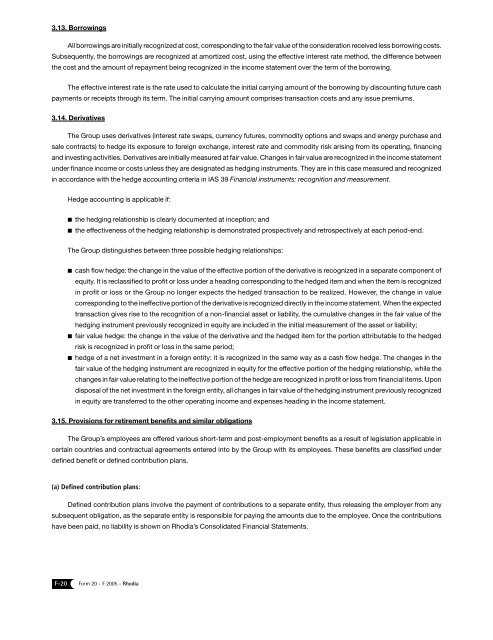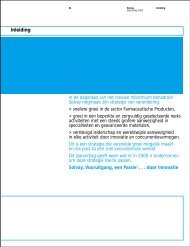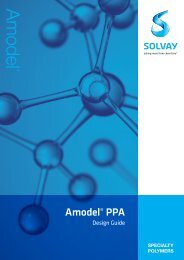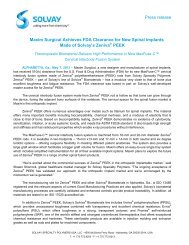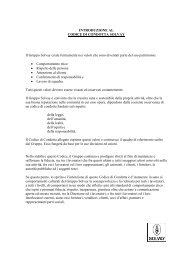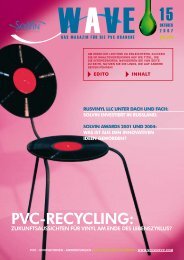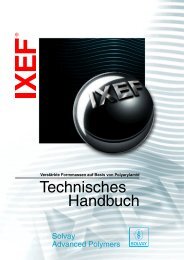Form 20-F 2005
Form 20-F 2005
Form 20-F 2005
Create successful ePaper yourself
Turn your PDF publications into a flip-book with our unique Google optimized e-Paper software.
3.13. Borrowings<br />
All borrowings are initially recognized at cost, corresponding to the fair value of the consideration received less borrowing costs.<br />
Subsequently, the borrowings are recognized at amortized cost, using the effective interest rate method, the difference between<br />
the cost and the amount of repayment being recognized in the income statement over the term of the borrowing.<br />
The effective interest rate is the rate used to calculate the initial carrying amount of the borrowing by discounting future cash<br />
payments or receipts through its term. The initial carrying amount comprises transaction costs and any issue premiums.<br />
3.14. Derivatives<br />
The Group uses derivatives (interest rate swaps, currency futures, commodity options and swaps and energy purchase and<br />
sale contracts) to hedge its exposure to foreign exchange, interest rate and commodity risk arising from its operating, financing<br />
and investing activities. Derivatives are initially measured at fair value. Changes in fair value are recognized in the income statement<br />
under finance income or costs unless they are designated as hedging instruments. They are in this case measured and recognized<br />
in accordance with the hedge accounting criteria in IAS 39 Financial instruments: recognition and measurement.<br />
Hedge accounting is applicable if:<br />
the hedging relationship is clearly documented at inception; and<br />
the effectiveness of the hedging relationship is demonstrated prospectively and retrospectively at each period-end.<br />
The Group distinguishes between three possible hedging relationships:<br />
cash flow hedge: the change in the value of the effective portion of the derivative is recognized in a separate component of<br />
equity. It is reclassified to profit or loss under a heading corresponding to the hedged item and when the item is recognized<br />
in profit or loss or the Group no longer expects the hedged transaction to be realized. However, the change in value<br />
corresponding to the ineffective portion of the derivative is recognized directly in the income statement. When the expected<br />
transaction gives rise to the recognition of a non-financial asset or liability, the cumulative changes in the fair value of the<br />
hedging instrument previously recognized in equity are included in the initial measurement of the asset or liability;<br />
fair value hedge: the change in the value of the derivative and the hedged item for the portion attributable to the hedged<br />
risk is recognized in profit or loss in the same period;<br />
hedge of a net investment in a foreign entity: it is recognized in the same way as a cash flow hedge. The changes in the<br />
fair value of the hedging instrument are recognized in equity for the effective portion of the hedging relationship, while the<br />
changes in fair value relating to the ineffective portion of the hedge are recognized in profit or loss from financial items. Upon<br />
disposal of the net investment in the foreign entity, all changes in fair value of the hedging instrument previously recognized<br />
in equity are transferred to the other operating income and expenses heading in the income statement.<br />
3.15. Provisions for retirement benefits and similar obligations<br />
The Group’s employees are offered various short-term and post-employment benefits as a result of legislation applicable in<br />
certain countries and contractual agreements entered into by the Group with its employees. These benefits are classified under<br />
defined benefit or defined contribution plans.<br />
(a) Defined contribution plans:<br />
Defined contribution plans involve the payment of contributions to a separate entity, thus releasing the employer from any<br />
subsequent obligation, as the separate entity is responsible for paying the amounts due to the employee. Once the contributions<br />
have been paid, no liability is shown on Rhodia’s Consolidated Financial Statements.<br />
F-<strong>20</strong> <strong>Form</strong> <strong>20</strong> - F <strong>20</strong>05 - Rhodia


